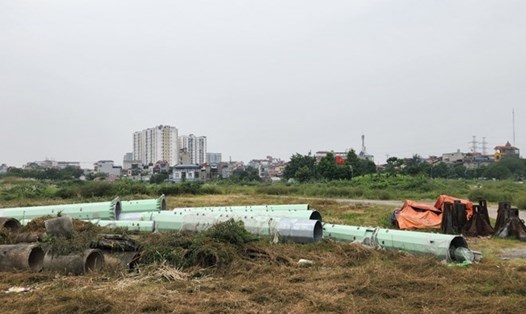This amount is even greater than the damage caused by storm No. 3 (3.3 billion USD).
The report also said: In the Asia-Pacific region, Vietnam is currently ranked second (after China) with more than 8 million tons of food lost or discarded each year, causing a loss of about 3.9 billion USD, accounting for nearly 2% of current GDP.
Thus, in terms of food waste per capita, Vietnam ranks first in the region. The Food and Agriculture Organization of the United Nations (FAO) stated that Vietnam is among the countries with high rates of food waste. Every year, millions of tons of food are wasted from production, processing, consumption and even after the food has been brought to restaurants, hotels or families.
Waste is evident in production and harvesting: Many Vietnamese farmers still do not have access to modern farming technologies and processes. Harvesting and preservation techniques are still backward, leading to a large amount of food loss right from the harvest stage. In addition, the underdeveloped transportation and cold storage system makes agricultural products susceptible to spoilage, especially for fresh fruits, vegetables and foods.
In addition, there is waste in processing and consumption: At processing facilities, the removal of food that is considered “substandard” has caused a lot of waste. Meanwhile, at markets and supermarkets, ineffective management of goods by expiration date leads to a lot of food being thrown away even though it is still usable.
Notably, food waste in shopping and family life: Many families in urban and rural areas often have the habit of buying large quantities of food, especially during holidays and Tet, but do not use it all. This leads to expired food, spoiled food and having to be thrown away. For restaurants and eateries, storing and processing excess food is a major cause of waste.
According to some studies, the amount of food wasted in Vietnam can account for 10-15% of the total amount of food produced annually.
To overcome food waste, Vietnam needs to apply a series of synchronous solutions from production, processing to consumption. In particular, it is necessary to raise public awareness: Education and propaganda are the key to changing people's perception of food waste. Communication campaigns need to be promoted to raise awareness of food protection and encourage responsible consumption. At the same time, it is necessary to promote education in schools about food management, nutrition and effective food use.
In addition, new technologies in farming, harvesting and preservation will help reduce food loss from the farm. Technologies such as cold storage, smart storage and fast transportation will help food maintain quality for a long time, minimizing losses during transportation and preservation.
It is especially necessary to change consumer awareness: Encourage people to consume smartly by buying only what is necessary, taking advantage of leftover food to prepare new dishes. At the same time, it is necessary to build the habit of checking the expiration date of food and using dishes that are close to expiration.
Saving food from the daily habits of each person has saved the country tens of thousands of billions of dong.












